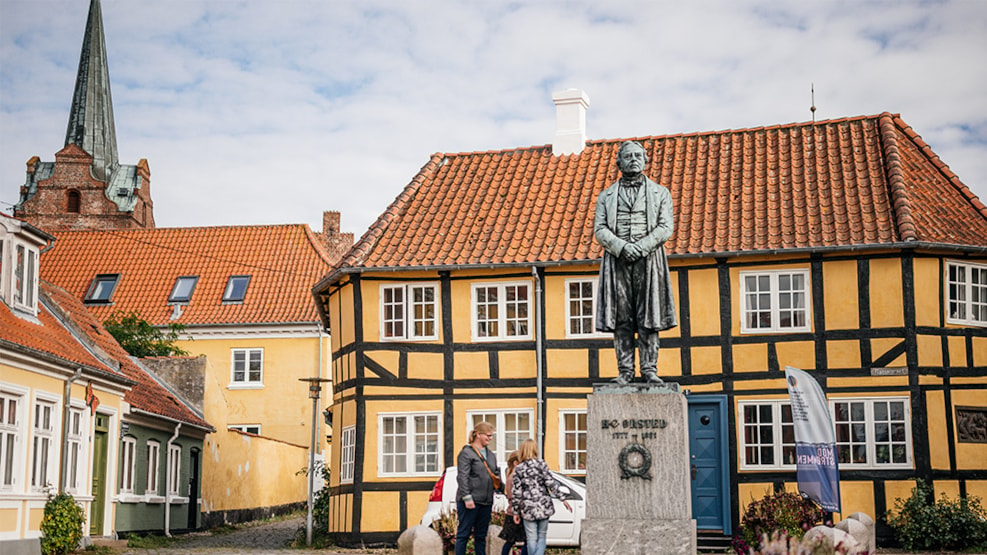
Geopark: Rudkøbing købstad
The town of Rudkøbing had its first royal privileges in 1287, but it is some generations older.
It still has its old medieval city plan and well-preserved streets and squares. For centuries Rudkøbing was a town of less than 1000 inhabitants, but nevertheless of great importance to the islanders. During the 19th century the population tripled, and in the last quarter of the century mills, iron foundries, breweries and other industries were founded, and the town had no less than 3 newspapers. The population peaked around 4000 in the beginning of the 20th century.
The different social ranking can be observed today as some streets have little houses, whereas the main streets, Brogade and Østergade have much larger houses, sometimes with big gardens. Several old merchant houses are preserved such as Strandgården, Bays gård and Bondo Petersens gård. Also the old pharmacy, the vicarage and a town hall are of importance.
The scientist Hans Christian Ørsted, who discovered electromagnetism 1820, grew up in Rudkøbing and became a professor in Copenhagen. A statue of Rudkøbing´s famous son is erected in front of the old pharmacy, where he was born.
The harbor is large and has five different docks. One for the ferries to the islands Ærø and Strynø, one for cargo ships, one for fishing boats and two for yachts. The original harbour-pier for cargo ships is still in place, now protected with other piers. Adding to the charm of the diverse harbours are interesting buildings such as a well-kept wooden warehouse and a beautiful neoclassical house, designed for a waiting room.